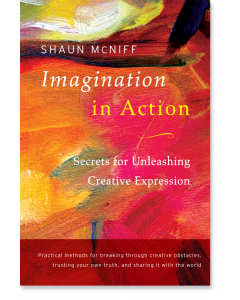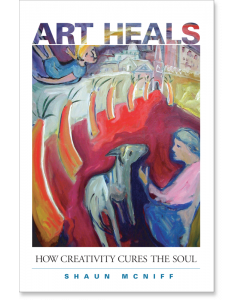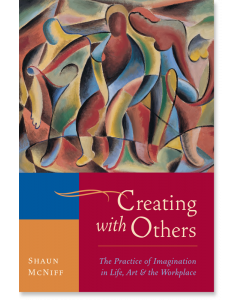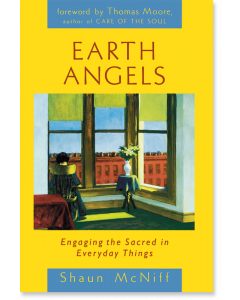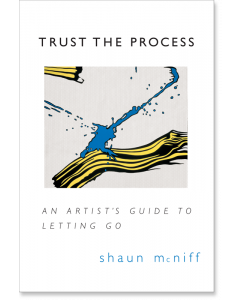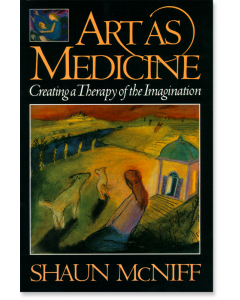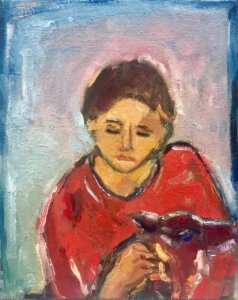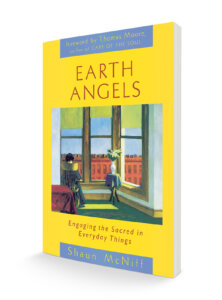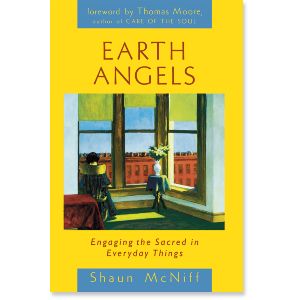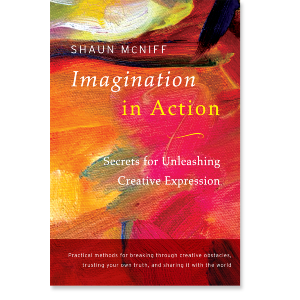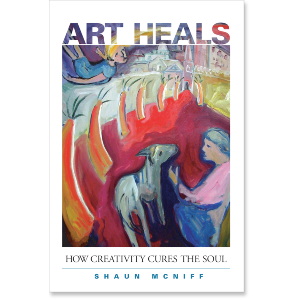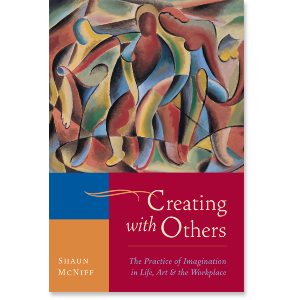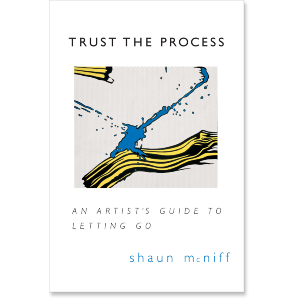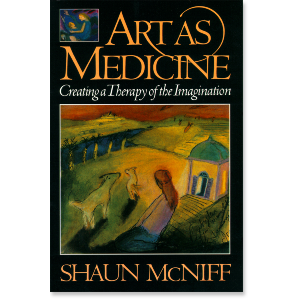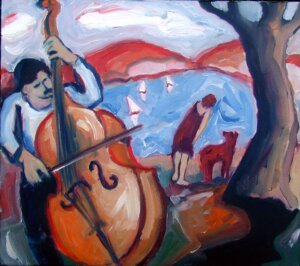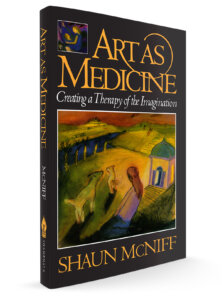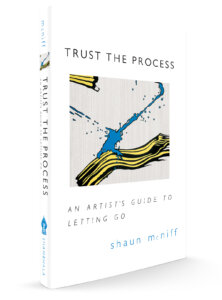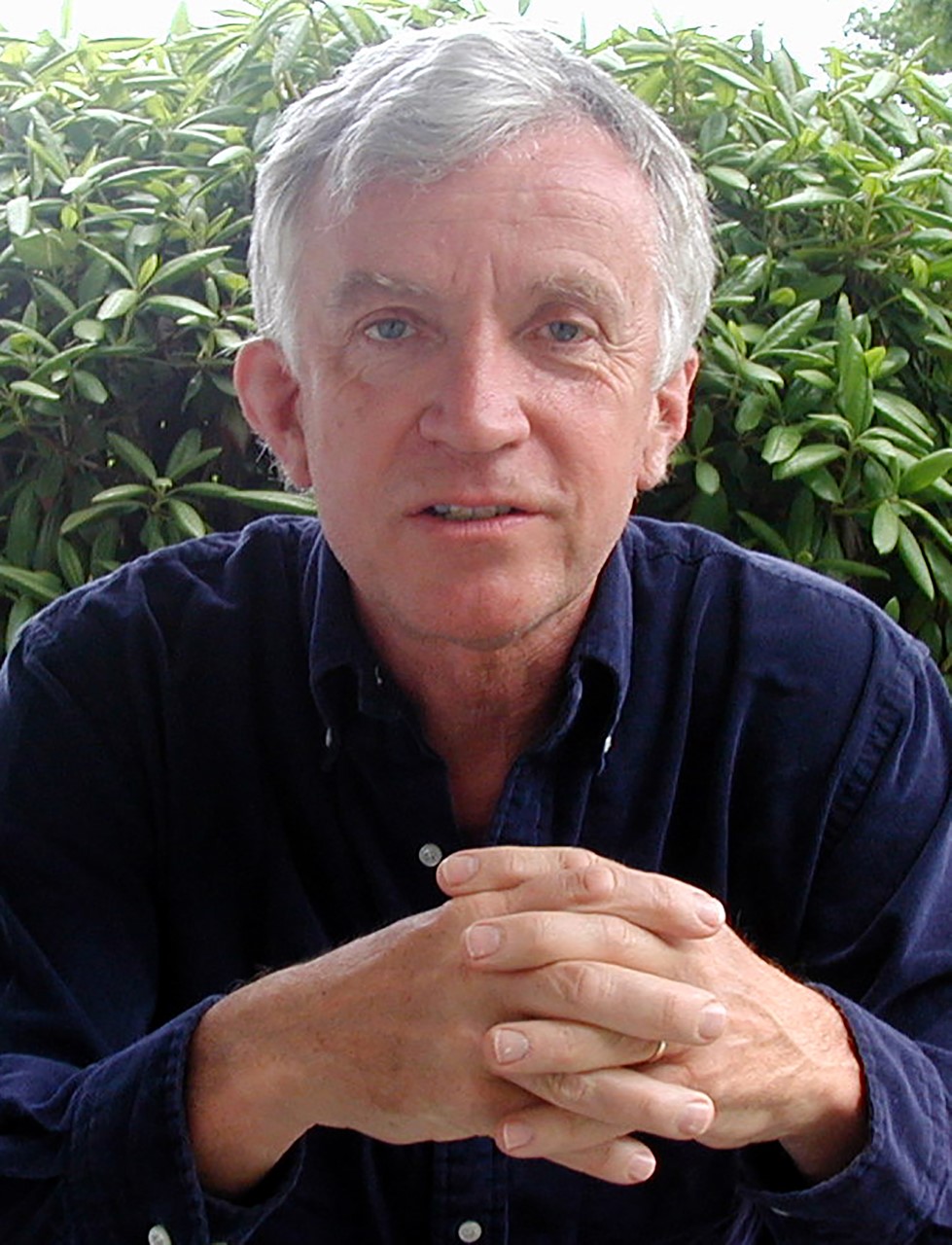

Shaun McNiff
Shaun McNiff is internationally recognized for furthering universal access to artistic expression as a source of creative well-being and human understanding in keeping with the continuities of world experience. University Professor Emeritus at Lesley University in Cambridge, Massachusetts, he is past president, and is a recipient of the Honorary Life Member award of the American Art Therapy Association. His books include Art As Medicine, Imagination in Action, Trust the Process, and Creating with Others. Shaun was selected by Mary Ann Brussat for the original Living Spiritual Teachers Project recognizing his contributions to everyday spirituality and the enhancement of creative imagination.
Shaun McNiff
GUIDES
A New Way of Looking | An Excerpt from Earth Angels
Angels are a way of looking at the world, infusing life with creative vitality and renewing our sense of the sacred. I am more concerned with seeing things with an angelic sense than with the literal discovery of angels.
Locating angels exclusively in the supernatural world banishes them from niches in neighborhoods and the workplace. My emphasis is noncelestial, but like most people I'm intrigued with airy spirits. I've got nothing against them. The problem lies in overlooking spiritual or subtle expressions of physical things, the earth angels available to the most ordinary consciousness. This way of looking might bring renewal, but it is not new. It lives through a tradition, deep waters flowing from antiquity, forever revitalizing themselves through changing forms.
Because I live in a world of physical images, I am drawn to this aspect of the angel. My meditations on angels have been shaped through years of clinical work with the arts, where it has become clear that images offer spirits to the people who make them or look at them. Like the images of the arts, angels come and go with the rituals we perform. Helping people access the medicine offered by the arts has kept me rooted in the material realm of soul's expression, where the images constantly call out for attention and for deeper and more imaginative interactions. I have come to angels through the aboriginal creative expressions of ordinary people in my art studios, where I have been taught many lessons about the soul's hunger for imagery. When these epiphanies appear in dreams, meditations, or the arts, we are faced with options as to how we will engage them. The rationalists explain them away as discharges of excess energy, whereas I prefer to welcome them as intimate figures of our inner lives.
I have been caught by surprise by the huge public interest in angels and find myself in the position of offering yet another angel book. But I hope the idiosyncrasies of my personal search will offer something different and useful to the discourse.
The guidebook reader asks, "How do I do it? How do I find the angels?"
I suggest looking at the most basic assumptions of your life, the things you take for granted, the stories you tell, your imaginings and desires. I will try to show how re-visioning the most common aspects of life yields an influx of imagination and angels. The richest veins are in the most unlikely sources. What we do not see is typically lodged in places where we do not want to look, or in those things we think we really know. Parents and childhood memories always evoke the earth angels. Tell the outrageous, embarrassing, and strange stories of your childhood, the ones you would never dare publish, and watch how people love to hear these things. It worked for Freud.
When we locate the angel "above" humans and closer to God, we are operating within a perspective that sees God as transcendent rather than immediate and present in everything. Rather than take sides on this ancient debate, I accept both. But this book is written from the latter perspective, which has been overlooked. I am concerned with the particular ways in which the divine presents itself through the forms of the world and their subtle expressions, what I call earth angels.
We really cannot operate within the realm of angels without affirming the divinity from which they emanate. I envision the divine source of all life as a mystery whose names include God, the numinous presence, the Creator, and other equally holy words. Jane Harrison described history's different experiences of the divine as images of desire. This does not suggest falseness. The desire for the divine is the core, the appetitus naturalis, the instinctus divinus.
In addition to addressing the spiritually oriented reader, I want to approach angels in a way that engages skeptics, materialists, cynical artists, suspicious depth psychologists, and the average person. Anybody who can perceive through the senses can experience the angels I will be evoking. They do not require extrasensory perceptions of any kind, but they ask that we reconsider how we relate to things. Angels are the "intermediaries," the perceptual images and imaginings that exist between myself and the physical world.
The arts and religion come together through angels and soul's natural desire for images and intimate relations with persons, places, things, and spirits. The spiritual reverie makes endless configurations. I liken images to angels, and this connection between physical things and their spiritual expression is the purpose of this book. The temples of the spirit are expanded to include our homes, workplaces, likes and dislikes, and other uncommon places for locating the divine.
Because angels are so closely associated with individual imaginations, I will try to evoke their presence by writing a personal book. My dialogue with the figures of the imagination will, I hope, support yours as others have inspired me. The creative spirit is a community of influences in which the angels of our expressions stimulate one another.
Reflections on angels help to deepen connections to the physical world. Conversely, I have found that giving careful attention to the physical details of a person, object, or landscape evokes the angels through feelings of depth. Sustained attention to the particulars of a thing passes through resistance and opens the soul. "Depth" often has more to do with staying in compassionate and attentive contact with the presence of another than with revealing "deep" secrets, which may take us away from the immediacy of the present engagement. Deep down is always right here and now. The angel can be imagined as the energy that exists between things and that furthers the process of relating.
Like a dream, the angel comes in its own time. It cannot be rushed or controlled. We prepare ourselves by readying the psychic household for guests and displaying welcoming signals. If we want the spirits of the dream, we have to participate in their world. The same thing applies to creative expression. Like dreams, the arrivals of art cannot be planned in advance. If we begin to write, to paint, to move or make sounds, the creative images will appear. If we designate shrines and places of meditation in our households and focus attention on them, the angels will present themselves. We woo the images with these affections and never take them for granted. It is a lifelong cultivation of imagination, and we find that the well-being of our souls is closely attuned to the way we interact with material things. We are beginning the long psychic recovery from centuries of nature abuse fueled by the religious command "Love not the world and its things."
Shaun McNiff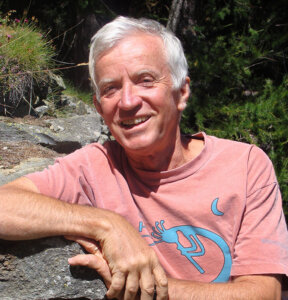
Books by Shaun McNiff
An Excerpt from Art as Medicine
WHENEVER ILLNESS is associated with loss of soul, the arts emerge spontaneously as remedies, soul medicine. Pairing art and medicine stimulates the creation of a discipline through which imagination treats itself and recycles its vitality back to daily living.
My perspective on medicine is artistic. I will not be making bioenergetic assessments of pulse beats altered by meditations on images. Although the chemistry of the body no doubt changes as a result of artistic expression and reflection, the purpose of this book is to engage them as modes of psychological inquiry. Rather than attempting to explain the artistic emanations of soul, our psychology desires to activate and move soul by striving to speak its own language.
The methods and philosophy in this book are based on principles of dialogue and interplay. Creation is interactive, and all of the players are instrumentalities of soul's instinctual process of ministering to itself. Conflict as well as affection propel the process.
Art as medicine does not restrict its interactions to human relationships. Concentration on the "other" ensouls the world, and paintings are ensouled objects or beings who guide, watch, and accompany their makers and the people who live with them. Their medicine is established by this "otherness," which enables them to influence people who open themselves to receiving help from another.
I intend this to be a practical book, based on life experiences, but not limited to descriptions of those experiences. The book is itself a "doing," an action in which soul demonstrates how it moves within the individualized yet archetypal context of a person's life. The word soul suggests the essential nature of persons and other phenomena. It is characterized by individuality, the aesthetic quality, or aura, that distinguishes one thing from another. It is also an inner movement or stirring, the force of creative animation and vitality. Soul is closely related to and sometimes synonymous with psyche, daimon, and other words that appear frequently in this text. All of these words emanate from a common mystery. Their purpose is poetic rather than explanatory, and through them the soul experiences itself more deeply. Throughout the book I will use the word image and generally refer to the visual images of dreams and pictures, but movements, sounds, poetry, enactments, and ideas are not excluded from my sense of the word.
As soon as a painting is made, or a dream remembered, the images that constitute their being are experienced as wholly other. This autonomous life of the image is the foundation of a revolutionary and pragmatic treatment of our psychic diseases. We see the dogs, automobiles, houses, and rivers in our paintings and dreams as parts of ourselves, confirming the egocentric madness of our reality. Everything is reduced to the perspective of the experiencing "I."
It is through others that we discover who we are. When we learn how to step aside and watch ourselves, the other becomes an agent of transformation. Dialoguing with images is a method for expanding ego's singular vision. In opening to others, we do not have to give away our place within the interaction. Others have an experience of us that may be quite different from our experience of ourselves. All of these perspectives are elements in the psychic stew. Reality is an ever-changing interplay and never a single, fixed position.
The dialogue between an artist and a painting is rarely limited to "twofold" communication. Many figures within the painting and the artist enter these conversations. It becomes increasingly clear that the first-person perspective of the artist, the "I" who is speaking, is composed of varied voices. On entering the world of the painting, we become aware of the many who speak through us, not just the figures in the pictures, but also the varied aspects of our thought. The articulation of these diverse "persons" is yet another aspect of image dialogue.
Virtually every person who uses art in psychotherapy believes in the ability of the image to expand communication and offer insight outside the scope of the reasoning mind. However, there are sharp distinctions in how we treat pictures once they appear. These attitudes range from approaching them as graphic signs for evaluating the mental conditions of artists, to greeting them as angels who come to offer assistance.
I view the making of art as a medicine that proceeds through different phases of creation and reflection. Although therapists and other people involved in this process make their contributions as guides and witnesses, the medicinal agent is art itself, which releases and contains psyche's therapeutic forces. The medicine offered by meditation on art is generally an infusion of imagination and awareness rather than a specific answer. "Messages" may ultimately be less significant than the engagement of images. Rather than understanding the "meaning" of the dreamer's pleasurable slide down a long pole into the darkness, we enjoy the slide and hold on to the image.
Yet artistic images encourage us to look at them and reflect upon their natures, both physical and psychological. Interpretation enters the world of the image and responds to its nature. Rather than labeling pictures from our frames of reference, we meditate on them, tell stories about how we created them, speak to them, listen to what they have to say, dramatize them through our bodily movement, and dream about them. All of these methods are dedicated to the ongoing release of art's expressive medicine. Analysis and reason make many contributions to our meditations, but they do not dominate.
Interpretive dialogue offers artists a psychology that resonates with the shaping of images. Although our emphasis here is on the personal and intimate dialogue between individual painters and their pictures, the same principles can be applied to "public" art. Inner dialogue and meditation enable a person to establish a private relationship with any art object. This mode of interpretation can be likened to Henry Corbin's vision of "creative prayer" as an "intimate dialogue" between two beings who depend upon one another and whose interaction leads to "new creations."
Since every aspect of art contributes to its medicine, we do not assume that some expressions heal and others do not. Negative and disturbing images are vital stimulants for healing in that the toxin is the antitoxin. Art's medicine trusts spontaneous expression and avoids prescriptions-bright colors to cure depression, heroic figures to conquer fear, good energies to overwhelm bad. The grotesqueness of Bosch's underworld is welcomed together with the serenity of Monet's water lilies. Creative expression of the soul's aberrations gives them the opportunity to affirm rather than threaten life.
Paradoxically, it is the particulars of ordinary life that open to archetypal existence. The only way to soul's authentic and firsthand movement is through the medium of our most personal materials endowed with archetypal significance.

Books by Shaun McNiff
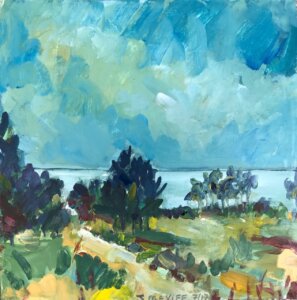
Stepping into the Unknown | An Excerpt from Trust the Process
My belief in the intelligence of the creative process has been affirmed by people who struggle in workshop groups where they are given opportunities to express themselves in the arts. Sometimes, people who are invited to express themselves freely will react with feelings of paralysis, fear, and intimidation. Memories of embarrassment and failure wrap them in what one woman described as a ‘‘cocoon.’’ The past traumas are often self-inflicted and not the fault of parents, teachers, or institutions. Even the best teachers of creativity encounter a common resistance to self-expression in their classes. The cocoon is spun partly from fears of self-disclosure. We all know intuitively that our spontaneous creative expressions elude the habitual monitoring of our inner censors, revealing things to others that are outside our conscious control. If we allowed our simple essence or our ungroomed emotions to show, we might look foolish, vulnerable, or unattractive. There is also the assumption that creative expression is only for the talented few and that our creation is a waste of time since it will never compare to what the ‘‘masters’’ do.
The typical person says, ‘‘I can’t do that.’’
Or, ‘‘This is ridiculous, a waste of time. I have more important things that I could be doing today.’’
It is intriguing how schoolteachers participating together in my creative arts workshops are often the most resistant to free and imaginative expression. Teachers are known for demanding clear directions and immediate applications because school is almost totally focused on training the literal mind.
There are many things that we teach in school that involve the mastery of sequential skills that build upon one another. Most of the educational system is established on the assumption that learning follows a logical and predictable pattern of acquiring knowledge. Educators are actually required to produce lesson plans and structure their classes around measurable outcomes. We then test the student at various intervals to determine whether or not they are performing within acceptable standards. Many people teach art in this way. They show the student how to draw a head by starting with an oval and then mathematically locate the placements of eyes, nose, ears, and mouth. This approach to teaching is technical and it has its place within the training of artists. Structure and openness are partners in every creation.
But there is very little emphasis within our educational systems on the education of the imagination, which requires sustained encounters with uncertainty. My experiences in working with teachers illustrate the benefits of acquiring the aptitude to embrace the unknown—what John Keats called ‘‘negative capability.’’
In my training groups with teachers I repeatedly observe that their initial resistance ultimately leads to rewarding experiences with creative unfolding. There are typically a series of difficult phases that the groups of teachers must pass through in understanding that the creative process is not something to be contained in lesson plans.
When I work with teachers in an extended creative arts workshop, there is a classic resistance that appears at the beginning. The doubt can be heard in their silence: ‘‘What’s the purpose of this? What’s it got to do with my classroom? What am I doing here?’’
Someone inevitably protests and questions the validity of what is happening. I experience fear and sense how easily everything can fall apart. Others join the protest, and the community divides. The group flounders.
I have learned that I must let ‘‘the process’’ follow its course. As frustration builds, someone as a rule challenges my ability and people in the group begin to confront one another. Others withdraw into themselves. It is always hard to see that doubt, fear, and indirectness are eternal aspects of the creative path.
When everything seems hopeless and going nowhere, I observe that the group as a whole is enacting how the process of creation works its way through an individual person. Strong feelings start to focus energy. People become keenly involved in spite of themselves. The process arouses emotion and draws everything into itself.
A new direction flows from the dissolution. There is a feeling of hope and transformation.
If we are able to stay with a situation, it will carry us to a new place. The ‘‘process’’ knows where it needs to go and if it is exclusively directed or controlled by any one person, we miss the opportunity to learn this lesson. There is a group mind or collective intelligence working in every situation and if we can trust it, and sincerely support its natural movement, it will astound us with its ability to use whatever we give it.
The psychologist Carl Rogers used to say that given the proper support and safety, every group will progress through conflict to a state of change and resolution. But in order for the process to become transformative, there must be a prevailing atmosphere of respect and empathy for the participants. These attitudes provide the essential environment that people need in order to risk new expressions, whether in the art studio, the classroom, the office, or the family.
Trust in the process assumes that there is a force that moves within a group, an individual, or a situation that is distinctly ‘‘other’’ and not subject to control. ‘‘It’’ finds the way through problems and complex interactions among people and as well as through conflicting forces within ourselves. Although outside the reach of explanatory definition, this force is well known to any person familiar with the situations I am describing. It is the primary carrier of creation.
Training people to work with the creative process begins with their personal immersion in it. How can we guide others in a territory we do not know ourselves?
In training graduate students to work with the arts in therapy and education, I encourage an ongoing personal engagement with creative expression. The graduate students experiment with creative expression and personally experience the processes that they encourage in others. Repeatedly I observe how the most pervasive outcome of these extended involvements with the depths of creative expression is a faith in the process. The more intensely the students struggle, the more deeply they discover how the process will ultimately carry them to a new place. As D. H. Lawrence suggested, the soul is perfect in its movement and its ability to minister to itself. We are needed as active participants, but we have to learn how to act forcefully while simultaneously stepping aside so that the process has the freedom to do its work.
What Carl Rogers said about groups also applies to an individual person’s experimentation with the arts. If we work in a safe and supportive environment with what Rogers described as ‘‘unconditional positive regard’’ for our expression, the process of creation will ultimately proceed to a stable and meaningful outcome. The most threatening element is the lack of confidence that people have when the process becomes difficult and tense. They don’t realize that the conflict and uneasiness that they are experiencing are necessary and ‘‘part of the process.’’ Transformation occurs when we lose our way and find a new way to return.
In my personal experience as a teacher, it was the student who fought and struggled the most in her research into the workings of the creative process who produced the most memorable and convincing study of how the creative spirit moves through our lives. The depth and wisdom of her findings were shaped through the authority of her experience. The student taught also me to trust the process, because I was the constant target of her frustration. When things were going badly, I was the object of her fury. It was very difficult, and I privately wondered whether I was doing the right thing. She needed someone to fight against, someone who would hold firm amid all the turmoil. What distinguished this student’s work from the more conventional nay-sayers and complainers was the way she stayed with the process. She gave it the opportunity to transform itself.
In the education of imagination we invariably confront the way in which people have been conditioned to expect certainties in learning situations. There is an expectation that something concrete will be delivered by the teacher to the learner.
In training teachers from every conceivable discipline to engage all of the arts and integrate them into their different work situations, I have observed that they generally come with the following assumptions: ‘‘Tell me exactly how to do it and how I can use this in my classroom.’’ They are oriented toward the individual technique, not the process that runs through every method and continuously generates imaginative ways of doing things. Within the creative process, variations and unusual perspectives are encouraged. A group of us might work for a period of time in the same room and with the same materials and end up in vastly different places. There is no one ‘‘correct’’ way of proceeding, and this aspect of creativity goes contrary to many ingrained ideas about instruction.
Personal immersion in the creative process helps teachers establish empathy with what their students are experiencing. In my work I am constantly involving experienced teachers in art experiences for the first time, and they repeatedly say, ‘‘Now I understand what the children are feeling.’’
The teachers describe how there is a pattern to the way they face every new art experience with resistance and fear. They feel an equally consistent thrill and satisfaction after completing each new phase of the work. Whether it is dance, storytelling, musical improvisation, painting, mime, or poetry, the same forces of creation move through the experience, affirming that there is something essential that cannot be taught when we focus only on specialized technical instruction.
Trusting the process is based on a belief that something valuable will emerge when we step into the unknown. There are elements of surrender and letting go which have more to do with flexibility and the ability to change direction, than with defeat and annihilation. The ego is willing to relinquish its plans and expectations in order to receive an unanticipated result. Experienced creators are able to step aside and relax in order to advance. They work with the process, stimulating it with a forceful initiative or a subtle nudge, but always respectful of what takes shape outside the sphere of a person’s control.
The most rudimentary exercise for those wishing to experiment with stepping into the unknown, involves painting, drawing, moving, writing, or making sounds without any goal in mind. If you begin to work exclusively for the sake of expressing yourself, you have begun to practice ‘‘negative capability.’’
In my experience with this type of creative discovery, everything depends upon the degree to which I can perceive what I do with ‘‘un-conditional positive regard.’’ When the teachers in my studio group began to have a positive feeling for their free expressions with paint, everything began to change. The simplest gestures, color combinations, and repetitious patterns of lines and shapes became fascinating. As with meditation, any object intensely contemplated can be an opening to reverie. Everything depends upon the quality of attention that we can apply to our perceptions. The humblest expressions can be sources of insight and wonder.
Negative and fearful experiences can really test our capacity for positive reflection. In art therapy, healing often occurs when we begin to make paintings and performances that engage the sources of our discontents. When I enact my angst and fears in an artwork, they become my partners in creation, and my relationship to them is transformed.
Shaun McNiff

